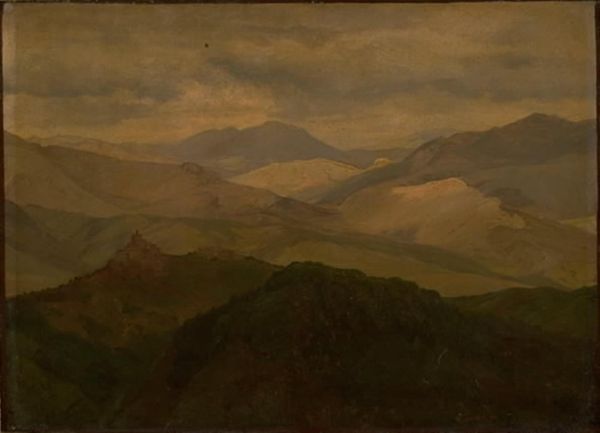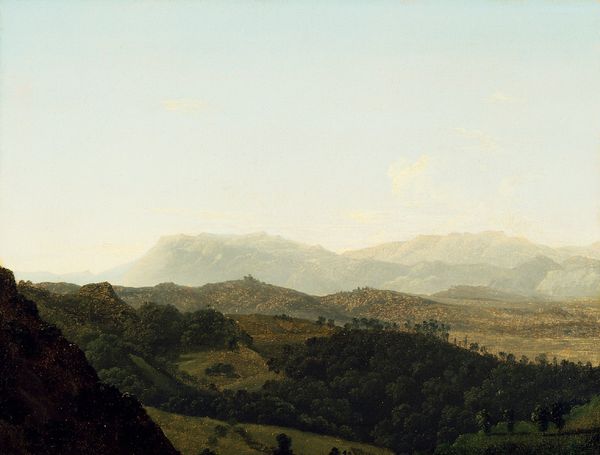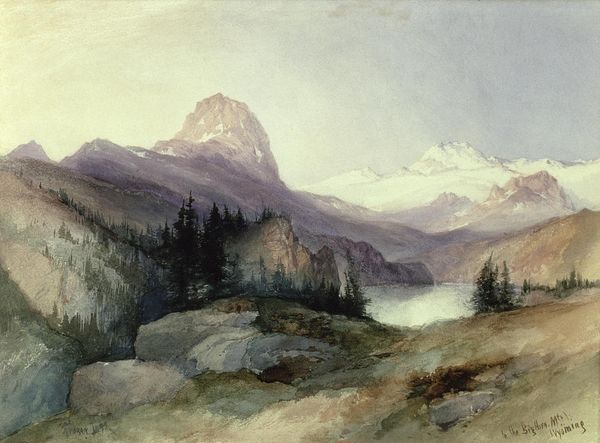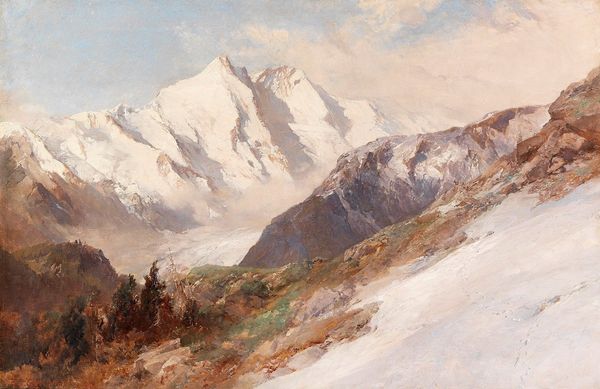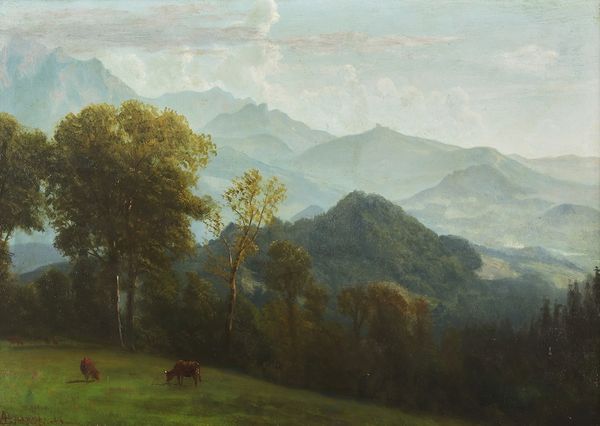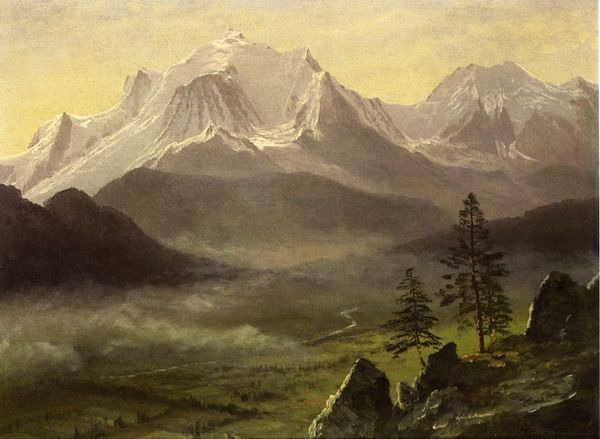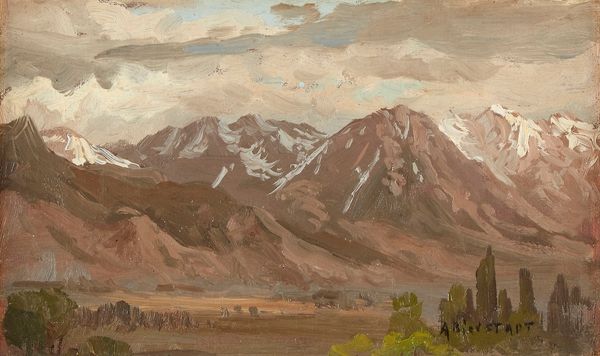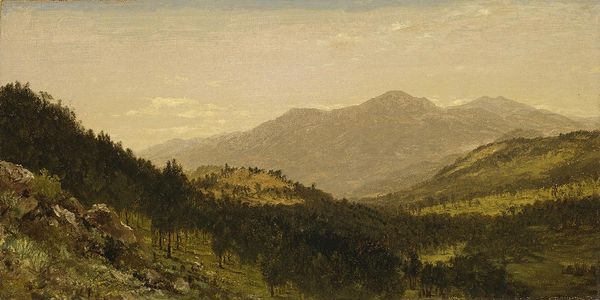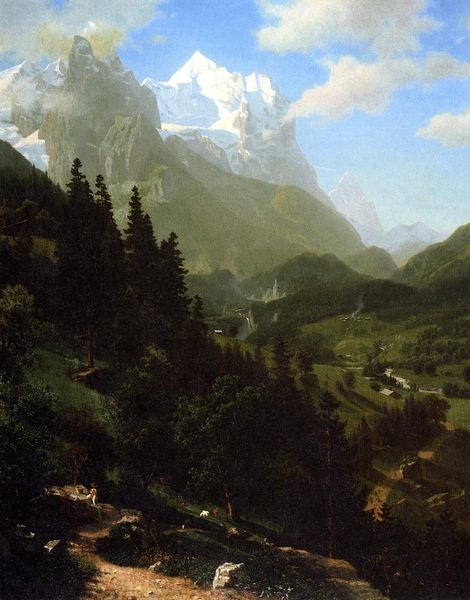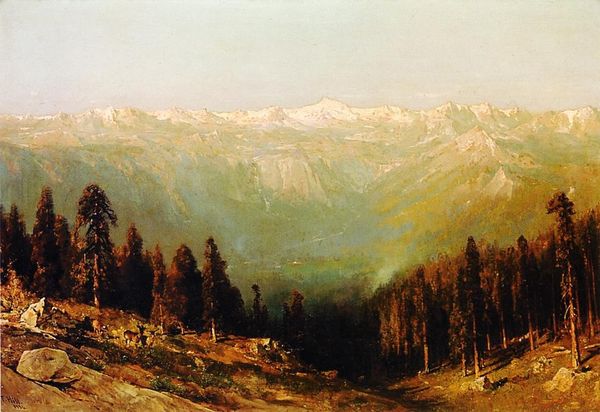
Copyright: Public Domain: Artvee
Curator: The eye is immediately drawn to the dark earth tones, which provide an anchoring contrast to the lighter, almost ethereal peaks. Editor: That's interesting. Lawrence Alma-Tadema created this oil painting titled "Mountain Landscape" sometime between 1875 and 1912. Tadema's historical paintings often glorify the past, but here he depicts nature in a comparatively unvarnished way. It stands in contrast to some of his more idealized subjects. Curator: The strategic positioning of the mountain creates a central vanishing point. While not explicitly symmetrical, the artist's division of space certainly achieves balance. Observe the light reflecting off the mountain against the darker shades of the earth in the lower half, for instance. How do you read this, historically speaking? Editor: I find myself asking about the contemporary perception of landscapes. Remember that landscape painting often functioned to assert ownership or dominion over the depicted territory. Even in its "unvarnished" form, as I described it earlier, this image might be viewed through a colonial lens, symbolically staking a claim through its very depiction. What appears to be an aesthetic portrayal of natural beauty may also represent subtle ideological claims, as the presence of unspoiled nature can also convey social messaging about industrial advancement and control. Curator: I think it's more evocative than proprietorial. The rough brushstrokes—particularly in the foreground—suggest an incomplete, fleeting quality, further emphasized by the cool, faded palette overall. It looks less like an inventory and more like a fleeting observation of nature’s majesty. Editor: Perhaps Tadema’s stylistic realism softens this claim to dominance somewhat; a more romantic portrayal might inflate this symbolism more forcefully. Curator: It invites speculation as to Tadema’s motivations in that era, when the popularity of purely historical subjects were already under artistic and social debates. The subdued tones certainly support an argument that Tadema might be embracing Realism by imbuing nature with a sense of authenticity. Editor: Yes, moving past celebratory or narrative driven artworks allowed artists a public avenue to question assumptions that are, at that moment in history, not only about painting, but their relation to audience, art markets, and politics in general. Curator: An elegant reminder that we are, to this day, implicated in those very negotiations every time we visit a museum.
Comments
No comments
Be the first to comment and join the conversation on the ultimate creative platform.
